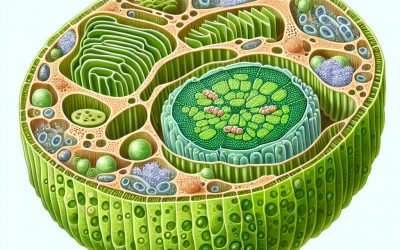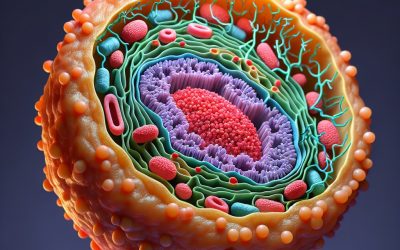Explore the World Through Geography, Natural Resources & Daily History
Clear, reliable and engaging guides that help you understand our planet — from UK geography education to global natural resources and On This Day history events.
Explore, discover, and learn about the wonders of our world! At Earth Site, we’re passionate about bringing geography, history, and science to life for curious minds of all ages. Whether you’re delving into historical events, uncovering the mysteries of the natural world, or seeking interactive resources, you’re in the right place.
Here, you can uncover the stories behind historical events, explore the natural wonders of our planet, and gain valuable insights into how the Earth’s systems shape our daily lives. From the towering peaks of mountain ranges to the far-reaching impacts of human innovation, we aim to make every topic both engaging and informative.
Start your journey of discovery with us today, and let’s make learning an adventure!
What We Cover
Earth Site brings together engaging and accessible educational content designed to help you understand the world, its history, and its natural systems.
🌍 Geography Education (UK & Worldwide)
We publish clear, easy-to-understand geography resources for students, teachers and curious learners. Our guides support geography education in the UK and cover physical geography, climate, ecosystems, population, and global development.
⛏️ Natural Resources & Environmental Geography
Explore detailed country profiles covering natural resources, mining, energy, geology and global environmental challenges. We show how nations manage minerals, water, land and ecosystems, and why these resources matter.
📅 On This Day in History
Every day has a story. Our On This Day history series features major events, anniversaries, traditions, and cultural milestones from around the world — with timelines, context, and fun facts.
TIMELINE
Exploring the Vibrant Culture and Breathtaking Landscapes of Cameroon
Cameroon, located in Central Africa, is a country known for its rich cultural heritage, stunning landscapes, and warm hospitality. It is bordered by Nigeria to the west, Chad to the northeast, the Central African Republic to the east, and Equatorial Guinea, Gabon, and the Republic of the Congo to the south. With an area of over 475,000 square kilometers and a population of approximately 26 million people, Cameroon is one of the largest and most populous countries in Africa. What makes Cameroon truly unique is its incredible diversity. The country is home to more than 200 different ethnic groups, each with its own distinct culture, language, and traditions. From the Bamiléké people in the west to the Fulani in the north and the Bakweri in the southwest, Cameroon is a melting pot of cultures. This diversity is also reflected in the country’s landscapes, which range from lush rainforests and rolling savannahs to towering mountains and pristine beaches. Summary Cameroon is a diverse and beautiful country with rich cultural heritage and natural wonders. The country boasts stunning mountains, forests, and beaches, making it a paradise for nature lovers. Cameroon is home to unique flora and fauna, making it a must-visit destination for wildlife enthusiasts. The vibrant music and dance scene of Cameroon is a celebration of life and a reflection of the country’s rich cultural diversity. The delicious cuisine of Cameroon is a fusion of flavours and influences, reflecting the country’s history and cultural heritage. Discovering the Rich Cultural Heritage of Cameroon One of the highlights of visiting Cameroon is immersing yourself in its rich cultural heritage. Each ethnic group...
The Importance of Understanding the Plant Cell Wall: Exploring Its Structure and Function
The plant cell wall is a complex structure that surrounds and protects plant cells. It is composed of various components, including cellulose, pectin, hemicellulose, and lignin. Understanding the plant cell wall is crucial for understanding plant growth and development, as well as for developing strategies to improve crop yields and resistance to pests and diseases. Key Takeaways The plant cell wall is a complex structure that provides support and protection to plant cells. Cellulose is the most abundant component of the plant cell wall and is responsible for its strength and rigidity. Pectin is a key component of the plant cell wall that helps to regulate cell growth and development. Hemicellulose plays an important role in the plant cell wall by providing flexibility and elasticity. Lignin is a complex polymer that provides additional strength and protection to the plant cell wall. The Role of the Plant Cell Wall in Plant Growth and Development One of the primary functions of the plant cell wall is to provide support and protection to the plant. The cell wall gives rigidity to the plant cells, allowing them to maintain their shape and withstand external pressures. It also acts as a barrier, protecting the plant from pathogens and other harmful substances. In addition to support and protection, the plant cell wall also plays a crucial role in regulating water and nutrient uptake. The cell wall acts as a filter, allowing water and nutrients to pass through while preventing the entry of harmful substances. It also helps in maintaining the turgor pressure of the cells, which is essential for cell expansion and growth. Furthermore, the...
Discovering the Hidden Gems of Cambodia: A British Traveller’s Insightful Journey
Cambodia, a country located in Southeast Asia, is a land of rich history, vibrant culture, and breathtaking landscapes. From its ancient temples to its bustling cities, Cambodia offers a unique and unforgettable travel experience. In recent years, Cambodia has become an increasingly popular tourist destination, attracting visitors from all over the world. This article will explore the different regions of Cambodia and the attractions they have to offer. Cambodia has a fascinating history that dates back thousands of years. The Khmer Empire, which ruled over much of Southeast Asia from the 9th to the 15th century, left behind a legacy of magnificent temples and architectural wonders. The most famous of these temples is Angkor Wat, a UNESCO World Heritage site and one of the largest religious monuments in the world. Cambodia’s culture is deeply rooted in its history, with influences from Hinduism and Buddhism evident in its art, architecture, and traditions. In recent years, Cambodia has seen a surge in tourism as more and more people discover its beauty and charm. The country offers a unique blend of ancient history and modern attractions, making it an appealing destination for all types of travelers. From exploring ancient temples to relaxing on pristine beaches, Cambodia has something to offer everyone. Summary Cambodia is a hidden gem with a unique allure that is worth exploring. Siem Reap is a charming destination that offers a chance to explore the ancient temples of Angkor. Battambang is a serene haven for art and culture enthusiasts. Phnom Penh is a city with a dark history that is shrouded in mystique and worth uncovering. Kep is a...
The Benefits of Boron: How this Trace Element Can Boost Your Health
Boron is a chemical element that is essential for the growth and maintenance of the human body. It is a naturally occurring mineral that is found in the earth’s crust and can be found in various foods. Boron plays a crucial role in many physiological processes, including bone health, brain function, hormonal balance, inflammation reduction, heart health, immune system support, skin health, and cancer prevention. The importance of boron in the body cannot be overstated. It is involved in the metabolism of calcium, magnesium, and vitamin D, which are all essential for maintaining healthy bones. Boron also helps to regulate hormone levels, including testosterone and estrogen, which are important for reproductive health and overall well-being. Additionally, boron has anti-inflammatory properties that can help reduce pain and inflammation associated with conditions such as arthritis. It also supports heart health by reducing the risk of cardiovascular disease and boosts the immune system to fight off infections. The recommended daily intake of boron varies depending on age, sex, and overall health. The National Institutes of Health (NIH) recommends a daily intake of 1-13 mg of boron for adults. However, it is important to note that excessive intake of boron can be toxic and may cause adverse effects. Therefore, it is essential to consult with a healthcare professional before taking any boron supplements. Summary Boron is a trace mineral that is important for overall health and wellbeing. Boron plays a crucial role in bone health, helping to prevent osteoporosis. Boron may improve brain function and cognitive performance, as well as balance hormone levels. Boron has anti-inflammatory properties that may help relieve arthritis symptoms...
Unleashing the Power of Chloroplast: The Key to Sustainable Agriculture
Chloroplasts are essential organelles found in plant cells that play a crucial role in plant growth and development. These green structures are responsible for photosynthesis, the process by which plants convert sunlight into energy. Chloroplasts contain chlorophyll, a pigment that captures light energy and uses it to produce glucose, the primary source of energy for plants. Without chloroplasts, plants would not be able to produce their own food and sustain themselves. Key Takeaways Chloroplast plays a crucial role in plant growth and development. Harnessing the energy of chloroplast can increase crop yield. Chloroplast engineering can improve photosynthesis efficiency. Chloroplast-based biotechnology can promote sustainable agriculture. Chloroplast manipulation can enhance nutrient uptake and utilization. Understanding the Role of Chloroplast in Plant Growth and Development Chloroplasts have a unique structure that allows them to carry out photosynthesis efficiently. They are enclosed by a double membrane and contain stacks of thylakoid membranes, where the chlorophyll molecules are located. These thylakoid membranes are interconnected by lamellae, which form a network that maximizes the surface area available for light absorption. The main function of chloroplasts is to convert light energy into chemical energy through photosynthesis. During this process, chlorophyll molecules capture photons from sunlight and use their energy to split water molecules into hydrogen and oxygen. The hydrogen is then used to produce ATP (adenosine triphosphate), a molecule that stores energy, while the oxygen is released into the atmosphere as a byproduct. Harnessing the Energy of Chloroplast to Increase Crop Yield The energy produced by chloroplasts can be harnessed to increase crop yield through various methods. One approach is to genetically modify crops to enhance...
Mastering Divisibility: Unlocking the Secrets of Numbers
Divisibility is a fundamental concept in mathematics that deals with the ability of one number to be divided evenly by another number. In simple terms, a number is divisible by another number if it can be divided into equal parts without leaving a remainder. For example, 10 is divisible by 2 because it can be divided into two equal parts, resulting in 5. Divisibility plays a crucial role in various mathematical operations and is essential for understanding more complex mathematical concepts. Understanding the basics of divisibility is important because it forms the foundation for many mathematical concepts and operations. Divisibility is used in various branches of mathematics, such as algebra, geometry, and number theory. It allows mathematicians to analyze numbers and identify patterns and relationships between them. Divisibility also helps in simplifying calculations and solving equations. To understand divisibility, it is important to grasp some basic concepts. One such concept is the idea of factors. A factor of a number is a whole number that divides evenly into that number without leaving a remainder. For example, the factors of 12 are 1, 2, 3, 4, 6, and 12. Another concept related to divisibility is multiples. A multiple of a number is the result of multiplying that number by any whole number. For example, the multiples of 3 are 3, 6, 9, 12, and so on. Key Takeaways Divisibility is the ability of a number to be divided by another number without leaving a remainder. Divisibility rules are shortcuts that help determine if a number is divisible by another number. Prime numbers are numbers that are only divisible by 1...
Discover the Hidden Gems of Cabo Verde: A Journey Through the Enchanting Archipelago
Cabo Verde, also known as Cape Verde, is a hidden gem located off the coast of West Africa. This enchanting archipelago consists of ten islands and five islets, each offering its own unique beauty and charm. With its pristine beaches, rich history and culture, thrilling adventures, delicious cuisine, vibrant music and dance, and commitment to sustainable tourism, Cabo Verde is a destination that should not be missed. Summary Cabo Verde is a hidden gem with enchanting islands, rich history and culture, unforgettable beaches, thrilling adventures, delicious cuisine, vibrant music and dance, and sustainable tourism practices. The archipelago offers a journey through the islands, each with its own unique charm and attractions. Cabo Verde’s history and culture are shaped by its African and Portuguese influences, with a blend of music, dance, and art. The beaches of Cabo Verde are pristine and offer a range of activities, from surfing to relaxing in the sun. Cabo Verde is a destination for adventure seekers, with opportunities for hiking, diving, and exploring the natural beauty of the islands. The Enchanting Archipelago Cabo Verde is made up of ten islands: Santiago, Santo Antão, São Vicente, São Nicolau, Sal, Boa Vista, Maio, Fogo, Brava, and Santa Luzia. Each island has its own distinct character and attractions. Santiago, the largest island and home to the capital city of Praia, offers a mix of beautiful beaches and historical sites. Santo Antão is known for its stunning landscapes and hiking trails. São Vicente is famous for its vibrant music scene and cultural festivals. São Nicolau is a paradise for nature lovers with its lush valleys and mountains. Sal and...
Exploring the Fascinating World of Plant Cells: Unveiling Their Unique Characteristics
Plant cells are the basic structural and functional units of plants. They are eukaryotic cells, meaning they have a nucleus and other membrane-bound organelles. Plant cells are vital to the ecosystem as they are responsible for the growth, development, and reproduction of plants. Without plant cells, life on Earth as we know it would not be possible. Key Takeaways Plant cells are the building blocks of plants and play a crucial role in sustaining life on Earth. The anatomy of plant cells includes various structures such as the cell wall, chloroplasts, and vacuoles, each with unique functions. Plant cells are essential for photosynthesis, which harnesses the power of the sun to produce energy for the plant. Plant cells are crucial for food production and play a significant role in feeding the world’s population. Plant cells are diverse, adaptable, and have the potential to unlock new possibilities for research and innovation. The Anatomy of Plant Cells: Structure and Function Plant cells have several distinct parts that work together to carry out various functions. The cell wall is a rigid outer layer that provides support and protection to the cell. It is made up of cellulose, a complex carbohydrate. Inside the cell wall is the cell membrane, which controls the movement of substances in and out of the cell. The nucleus is the control center of the cell and contains the genetic material, DNA. It regulates all cellular activities and is responsible for cell division and reproduction. Surrounding the nucleus is the cytoplasm, a gel-like substance that contains various organelles. The Unique Characteristics of Plant Cells: Cell Walls, Chloroplasts, and Vacuoles...
The Fascinating World of Plant Cells: Exploring the Building Blocks of Life
Plant cells are the building blocks of life on Earth. They are the fundamental units of structure and function in plants, and they play a crucial role in the ecosystem. Plant cells are responsible for photosynthesis, which is the process by which plants convert sunlight into energy. This energy is then used by the plant to carry out various functions, such as growth, reproduction, and defense against pathogens. Without plant cells, life as we know it would not exist. Plants are the primary producers in the food chain, meaning they are the source of energy for all other organisms. They provide food for animals, oxygen for us to breathe, and they help regulate the climate by absorbing carbon dioxide from the atmosphere. In addition, plant cells also contribute to the formation of soil and help prevent erosion. Key Takeaways Plant cells are the basis of life and are responsible for producing energy through photosynthesis. Understanding the anatomy and function of plant cells is crucial to unlocking the secrets of life. Plant cells range from simple to complex and have the ability to adapt to environmental changes. Plant cell research is a fascinating field with potential for innovative applications in the future. Celebrating the wonders of plant cells is important for recognizing their role in feeding the world and sustaining life on Earth. The Anatomy of a Plant Cell: Understanding the Parts Plant cells have a unique structure that sets them apart from animal cells. They have a rigid cell wall made of cellulose, which provides support and protection for the cell. Inside the cell wall is the cell membrane,...
Unlocking the Magic of Prime Numbers: The Fascinating World of Mathematics
Prime numbers are a fundamental concept in mathematics. They are defined as positive integers greater than 1 that have no divisors other than 1 and themselves. In other words, prime numbers cannot be divided evenly by any other number except for 1 and the number itself. Prime numbers play a crucial role in various areas of mathematics, including number theory, cryptography, and computer science. They are considered the building blocks of mathematics because all other numbers can be constructed from prime numbers through a process called prime factorization. Some examples of prime numbers include 2, 3, 5, 7, 11, and 13. These numbers cannot be divided evenly by any other number except for 1 and themselves. Prime numbers become less frequent as we move along the number line, with larger prime numbers becoming increasingly rare. Key Takeaways Prime numbers are the fundamental building blocks of mathematics. The history of prime numbers dates back to ancient times and continues to be an active area of research today. Prime number patterns and factorization reveal the secrets of primes and their unique properties. The Sieve of Eratosthenes is a simple and effective method for finding prime numbers. Prime numbers have important applications in cryptography, number theory, and beyond. The History of Prime Numbers: From Ancient Times to Modern Research The study of prime numbers dates back to ancient civilizations such as the Egyptians and the Greeks. The Egyptians were among the first to recognize the significance of prime numbers in their mathematical system. They used prime numbers in their calendar system and for measuring land. In ancient Greece, mathematicians like Euclid made...
Discovering the Hidden Gems of Bulgaria: A Journey through its Rich Culture and History
Bulgaria, located in Southeastern Europe, is a hidden gem when it comes to travel destinations. With its rich history, vibrant art and music scene, unique cuisine, stunning natural landscapes, folklore and traditions, Orthodox Christian heritage, warm hospitality, hidden gems, communist past, and modern culture, Bulgaria has something to offer every traveler. In this article, we will delve into the various aspects of Bulgarian culture and explore the many reasons why you should consider visiting this fascinating country. Key Takeaways Bulgaria has a rich ancient history, with Thracian tombs and Roman ruins to explore. The country has a vibrant art and music scene, with plenty of opportunities to experience local culture. Bulgarian cuisine is unique and delicious, with dishes like banitsa and rakia to try. Bulgaria’s natural landscapes are stunning, from mountains to beaches and beyond. The country has a rich folklore and tradition, with festivals, costumes, and folk dancing to discover. Uncovering Bulgaria’s Ancient History: From Thracian Tombs to Roman Ruins Bulgaria has a long and storied ancient history that dates back thousands of years. The country was once inhabited by the Thracians, an ancient civilization that left behind impressive tombs and artifacts. One of the most notable sites is the Thracian tombs in Kazanlak, which are UNESCO World Heritage Sites. These tombs are adorned with intricate frescoes that depict scenes from Thracian mythology and provide a glimpse into the ancient culture. In addition to the Thracian tombs, Bulgaria is also home to impressive Roman ruins. The city of Plovdiv, for example, boasts a well-preserved Roman amphitheater that dates back to the 2nd century AD. This amphitheater is still...
Exploring the Mighty Lysosome: The Unsung Hero of Cellular Waste Management
Lysosomes are membrane-bound organelles found in animal cells that play a crucial role in cellular waste management and recycling. They were first discovered by Belgian cytologist Christian de Duve in the 1950s, who coined the term “lysosome” to describe these structures. Lysosomes contain a variety of enzymes that are responsible for breaking down and recycling cellular waste materials, such as proteins, lipids, and carbohydrates. The importance of lysosomes in cellular function cannot be overstated. Without lysosomes, cells would not be able to efficiently remove and recycle waste materials, leading to a buildup of toxic substances and impaired cellular function. Lysosomes also play a role in other cellular processes, such as cell signaling, nutrient sensing, and immune response. Key Takeaways Lysosomes are the cellular recycling center responsible for breaking down and recycling cellular waste. Lysosomes are composed of a membrane-bound sac filled with enzymes that degrade and recycle cellular waste. Lysosomes play a critical role in cellular waste management, preventing the accumulation of toxic waste products. Lysosomal enzymes are the key players in degradation and recycling, breaking down a wide range of cellular waste products. Lysosomal autophagy is the process of self-eating, where lysosomes break down and recycle damaged organelles and proteins. The Structure and Function of Lysosomes: Understanding the Basics Lysosomes are small spherical organelles that are surrounded by a single membrane. They contain a variety of hydrolytic enzymes that are responsible for breaking down macromolecules into smaller components that can be recycled by the cell. The lysosomal membrane is composed of lipids and proteins that help maintain the integrity of the organelle and regulate the transport of...











